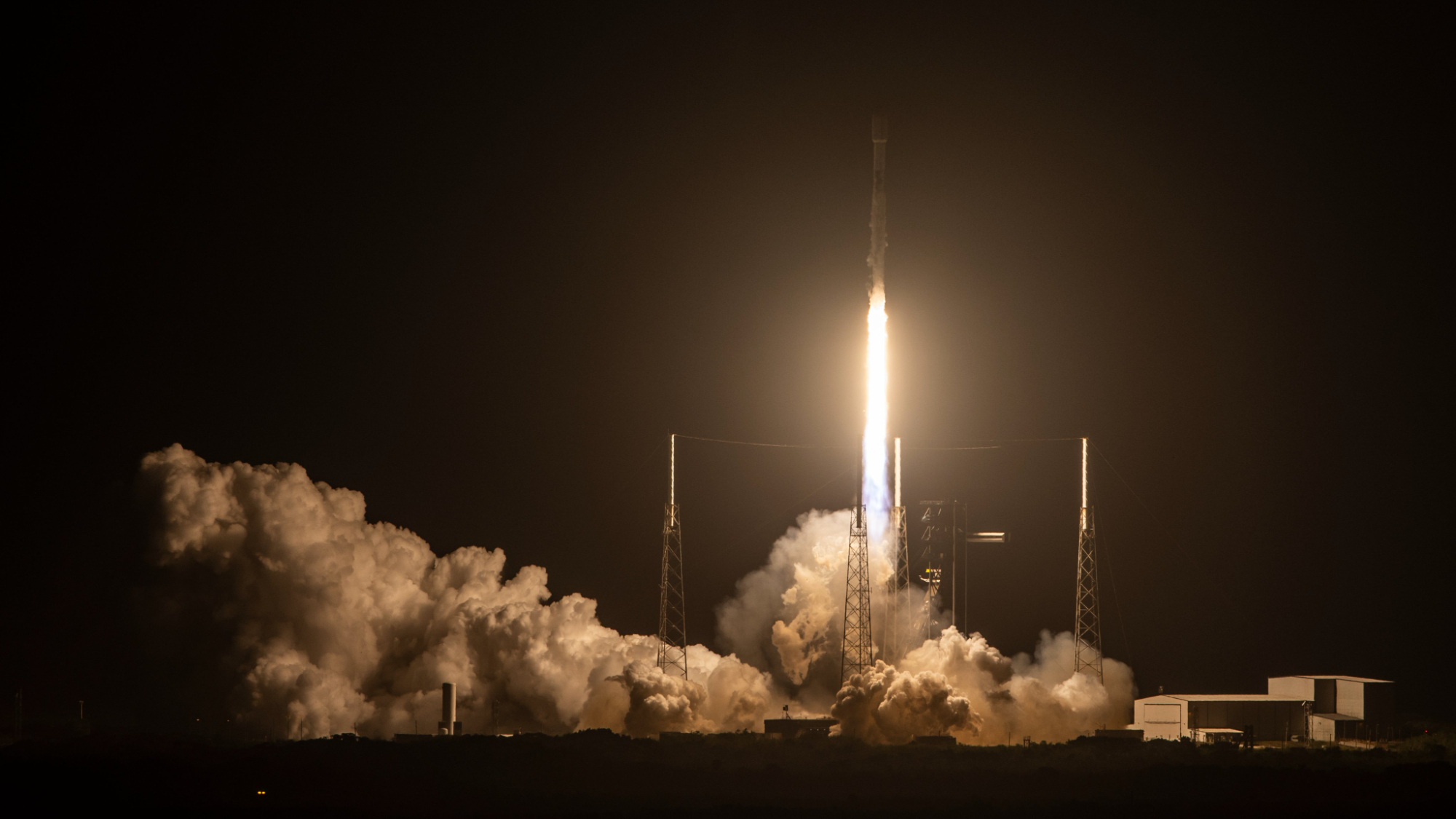SpaceX plans to launch the third batch of satellites for Amazon's Project Kuiper broadband megaconstellation early on Wednesday morning (July 16), and you can watch the action live.
A Falcon 9 rocket topped with 24 Kuiper craft is scheduled to lift off from Cape Canaveral Space Force Station in Florida on Wednesday, during a 27-minute window that opens at 2:18 a.m. EDT (0618 GMT).
Wednesday, by the way, is the 56th anniversary of the Apollo 11 launch. That famous NASA mission put Neil Armstrong and Buzz Aldrin down on the lunar surface on July 20, 1969.
SpaceX will stream the Project Kuiper launch live via its website and its X account. Coverage will begin about 15 minutes before liftoff.
Project Kuiper is Amazon's version of Starlink, the broadband megaconstellation that SpaceX operates in low Earth orbit (LEO). Kuiper will eventually consist of more than 3,200 satellites, which will be lofted on more than 80 launches over the coming years. (The Starlink network, which is already up and running, consists of nearly 8,000 satellites — and that number is growing all the time.)
Wednesday morning's launch will be the third such mission. The first two Kuiper liftoffs were performed by United Launch Alliance Atlas V rockets in April and June of this year.
If all goes to plan during Wednesday's mission, which SpaceX calls KF-01, the Falcon 9's first stage will come back to Earth 8.5 minutes after launch. It will land on the SpaceX droneship "A Shortfall of Gravitas," which will be stationed in the Atlantic Ocean.
It will be the first launch and landing for this particular booster, according to a SpaceX mission description. That's a rarity, as SpaceX is known for its rocket reuse; one of the company's Falcon 9 boosters has a whopping 29 launches under its belt.
The Falcon 9's upper stage, meanwhile, will continue hauling the 24 Project Kuiper satellites to LEO. They'll be deployed at an altitude of 289 miles (465 kilometers) over a nearly eight-minute span that begins roughly 56 minutes after launch. The Kuiper craft will later raise their orbits to their final altitude of 392 miles (630 km).

.jpg) 16 hours ago
1
16 hours ago
1

 English (US)
English (US)